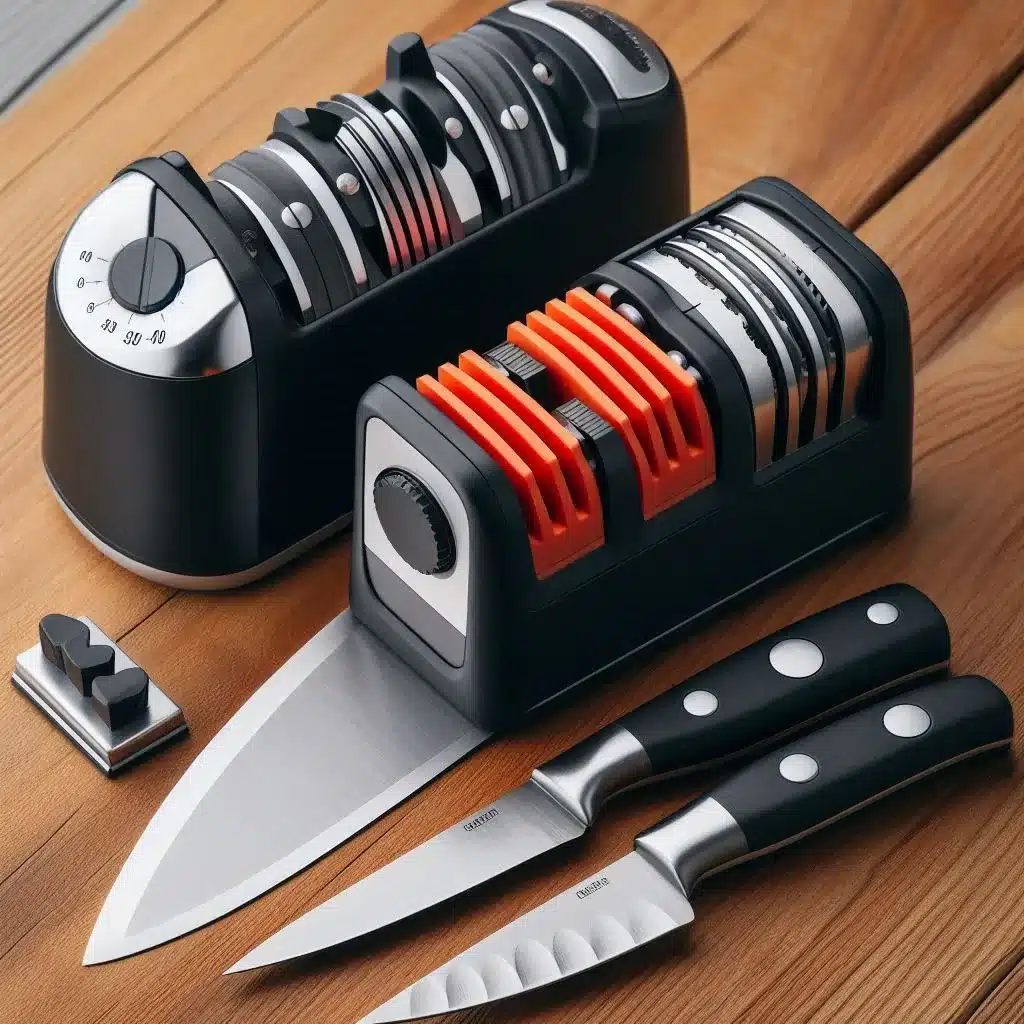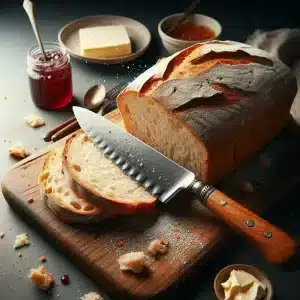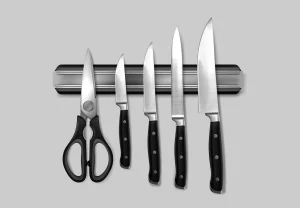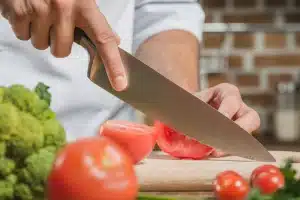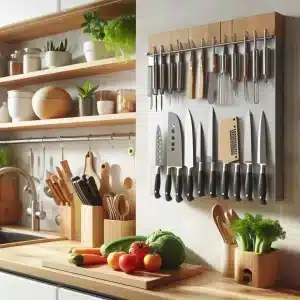Keeping your knives sharp is essential for efficiency, safety, and precision, whether you’re cooking at home, hunting, or engaging in outdoor activities. Learning how to use a knife sharpener properly will not only extend the life of your blades but also make your tasks smoother and more enjoyable. In this guide, we’ll walk you through everything you need to know, from different types of knife sharpeners to step-by-step instructions on using both manual and electric sharpeners.
Why Keeping Your Knife Sharp is Essential?
A sharp knife makes all the difference in the kitchen or the field. Dull knives can be dangerous because they require more force to cut through food or materials, increasing the risk of slips and injuries. On the other hand, a sharp blade gives you more control, making it easier to perform precision cuts, reduce waste, and work efficiently.
Moreover, sharpening your knives regularly preserves their quality. Over time, even high-quality knives lose their edge, but a well-maintained knife will last longer and perform better. A dull knife not only slows you down but can also ruin the texture and appearance of food, especially when dealing with delicate items like fish or herbs.
Different Types of Knife Sharpeners: Manual vs Electric
Knife sharpeners come in two main types: manual and electric. Each has its pros and cons, so it’s important to understand which one works best for you and your specific needs.
Manual Knife Sharpeners
Manual sharpeners offer greater control over the sharpening process. Common types include:
- Pull-through sharpeners: These are easy to use, with two or three slots designed for sharpening and polishing the blade. Simply pull the knife through the slot at a consistent angle, and the device does the rest.
- Whetstones: Also known as sharpening stones, these require more skill but offer the highest precision. You can control the sharpening angle and pressure manually.
- Honing rods: These are used to realign the knife’s edge between sharpenings rather than for full sharpening. They’re perfect for maintaining the sharpness of a well-kept knife.
Electric Knife Sharpeners
Electric sharpeners automate the sharpening process and are ideal for those who want fast results. They contain motorized wheels with abrasive materials that grind and hone the blade. These sharpeners often come with multiple stages (sharpening, honing, and polishing), and they are very convenient for busy kitchens. However, be careful with electric sharpeners, as they can wear down blades more quickly if overused.
Step-by-Step Guide to Using a Manual Knife Sharpener
Manual knife sharpeners, including pull-through sharpeners and whetstones, allow for a more customized sharpening experience. Here’s a step-by-step breakdown of how to use a manual sharpener properly.
1. Choose the Right Type of Sharpener
Different knives may require different sharpeners. For instance, a pull-through sharpener works well for most general-purpose kitchen knives, while a whetstone provides more control for precision knives, like Japanese blades.
2. Set the Sharpening Angle
The sharpening angle is critical to achieving the perfect edge. Most kitchen knives need an angle between 20 and 22 degrees, while sharper Japanese knives require an angle of 15 to 18 degrees. If you’re using a pull-through sharpener, it will typically have a preset angle, making this step easier. For whetstones, you’ll need to maintain the correct angle manually.
3. Secure the Sharpener
Place your sharpener on a non-slip surface to ensure it doesn’t move while you’re sharpening. If using a whetstone, set it in a holder or on a damp cloth for added stability.
4. Sharpen the Blade
For pull-through sharpeners, insert the blade into the designated slot and pull it through from heel to tip in a smooth motion. Repeat this process several times on both sides of the blade. If you’re using a whetstone:
- Lubricate the stone with water or oil, depending on the stone type.
- Hold the knife at the correct angle (around 20 degrees).
- Glide the knife across the stone in a sweeping motion from heel to tip, applying consistent pressure. Repeat on both sides of the blade until you achieve the desired sharpness.
5. Test the Sharpness
Check your knife’s sharpness by slicing through a sheet of paper or a tomato. If the knife slices cleanly without dragging, it’s ready to use.
6. Hone the Blade
After sharpening, honing helps realign the blade’s edge, which can become slightly bent during sharpening. Use a honing rod to gently straighten the blade by running it along the rod at a 20-degree angle.
How to Use an Electric Knife Sharpener?
Electric sharpeners simplify the sharpening process, making it quicker and more efficient. Here’s how to use one effectively.
1. Prepare the Sharpener
Ensure your electric sharpener is clean and in good working condition. Most electric sharpeners have multiple stages (sharpening, honing, and polishing), so familiarize yourself with these before starting.
2. Insert the Knife
Gently place the knife into the sharpener’s slot, following the guidelines on how to position it. The device will automatically set the correct sharpening angle.
3. Pull the Knife Through
Slowly pull the knife through the slot, applying light pressure. The rotating abrasive wheels will sharpen the blade. Repeat this process on both sides of the knife.
4. Use the Honing Stage
After sharpening, switch to the honing or polishing stage to refine the blade’s edge. This step smooths out any roughness and gives the knife a razor-sharp finish.
5. Test the Knife
Test the sharpness of your knife using the same methods described earlier. If the knife cuts smoothly through paper or soft foods, it’s ready for use.
Choosing the Right Sharpener for Your Knife
Not all sharpeners are suitable for every knife. For example, high-carbon steel knives like Japanese blades benefit from a whetstone for precision sharpening, while stainless steel knives can be sharpened with a pull-through or electric sharpener.
Consider the grit level of your sharpener as well:
- Coarse grit (lower numbers) is best for dull knives or those needing significant reshaping.
- Fine grit (higher numbers) is used for honing or maintaining an already sharp blade.
Matching the sharpener’s grit and type to your knife’s material and purpose will help you get the best results.
Common Risks and Safety Tips When Sharpening Knives
Sharpening knives can be risky if you’re not careful. Here are some safety tips to minimize hazards:
- Keep the sharpener on a stable surface: Ensuring your sharpener is secure will prevent accidents.
- Wear protective gloves: Consider wearing cut-resistant gloves while sharpening to avoid accidental cuts.
- Don’t over-sharpen: Sharpening too frequently can wear down your blade unnecessarily. Only sharpen when the knife is noticeably dull.
- Follow instructions: Each sharpener may have unique guidelines, especially electric models. Follow them closely to avoid damaging your knives.
- Store knives safely: Once sharpened, knives can be very sharp. Store them in a knife block or sheath to prevent accidents.
Do All Knives Need to Be Sharpened?
Not all knives require frequent sharpening. For example, serrated knives typically only need honing rather than full sharpening, as their design allows them to stay sharp longer. Similarly, knives used for delicate tasks (like paring knives) might not dull as quickly as those used for chopping hard vegetables or cutting meat.
In general, sharpen knives when they start to feel dull, but regular honing can help maintain the sharpness between full sharpenings.
How to Properly Clean Your Knife Sharpener?
Cleaning your knife sharpener is crucial for maintaining its performance. Over time, metal shavings and debris can build up, dulling the sharpener. Here’s how to clean different types of sharpeners:
- Manual sharpeners: Many pull-through sharpeners have removable parts that can be cleaned with a brush. Wipe down whetstones with a damp cloth after each use.
- Electric sharpeners: These usually come with cleaning brushes. Be sure to unplug the device before cleaning and carefully follow the manufacturer’s instructions to avoid damaging the mechanism.
Regular cleaning ensures that your sharpener remains effective and keeps your knives sharp without contamination.
Mistakes to Avoid When Sharpening Knives
Sharpening a knife may seem straightforward, but there are common mistakes that can lead to suboptimal results or even damage your blade. Avoid the following errors:
- Applying too much pressure: This can cause uneven sharpening and wear down your blade unnecessarily. Always use gentle, consistent pressure.
- Incorrect angle: If the angle is too steep or shallow, you risk dulling the blade or creating an edge that doesn’t hold.
- Skipping the honing step: Sharpening alone isn’t enough. Honing realigns the blade and removes small burrs that can affect cutting performance.
- Using a dirty sharpener: Debris buildup can scratch your knife or interfere with sharpening. Regularly clean your sharpener after use.
How Often Should You Sharpen Your Knives?
The frequency with which you sharpen your knives depends on how often you use them and what you use them for. As a general rule:
- Daily-use knives: If you cook daily, sharpen your knives every few months, and hone them regularly to maintain sharpness.
- Outdoor knives: For knives used outdoors or for heavy-duty tasks, sharpen them after every few uses.
- High-end knives: For professional-grade or high-end knives, consider sharpening less frequently to preserve the blade but hone regularly.
How to Extend the Life of Your Knives and Sharpeners?
Proper care not only extends the life of your knives but also your sharpeners. Here are some tips:
- Use a cutting board: Always use a wood or plastic cutting board to avoid damaging the knife edge. Avoid cutting on hard surfaces like glass or metal.
- Store knives correctly: Store knives in a block, magnetic strip, or protective sleeve to prevent them from banging into other utensils and dulling.
- Clean after each use: Wipe your knives clean after each use, and avoid leaving them wet to prevent rust or corrosion.
- Maintain your sharpener: Clean your sharpener regularly and check for wear. Replace sharpening stones or parts when they become worn down.
A sharp knife is a safer and more efficient tool, and learning how to properly use a knife sharpener is a valuable skill. By understanding the differences between manual and electric sharpeners, knowing how to sharpen safely, and maintaining both your knives and sharpeners, you’ll be able to keep your blades in peak condition.
Remember to sharpen knives only when needed, hone regularly, and always clean your sharpener after use. With these habits, your knives will remain sharp, effective, and safe to use, whether you’re cooking in the kitchen or out in the field.

